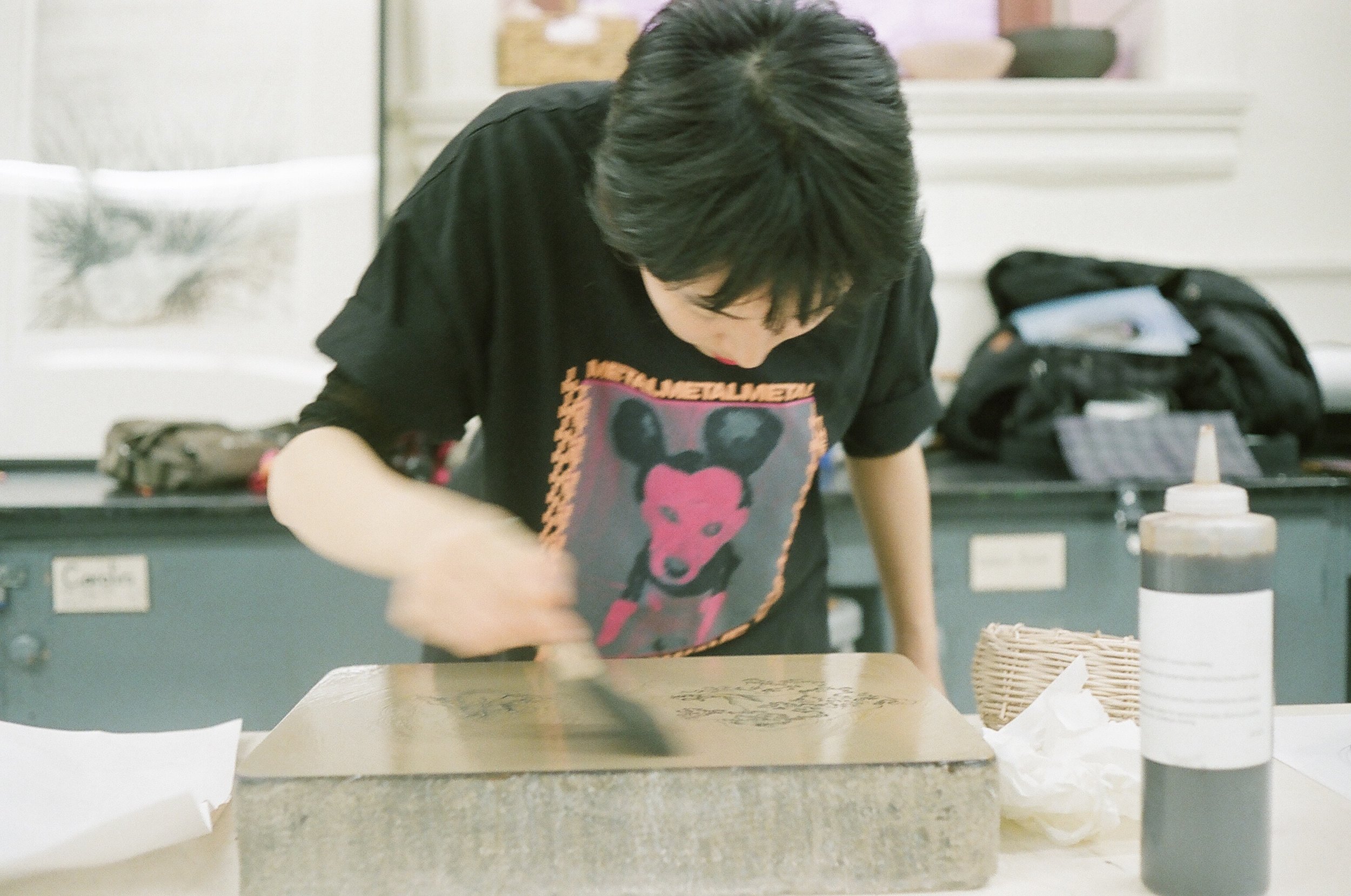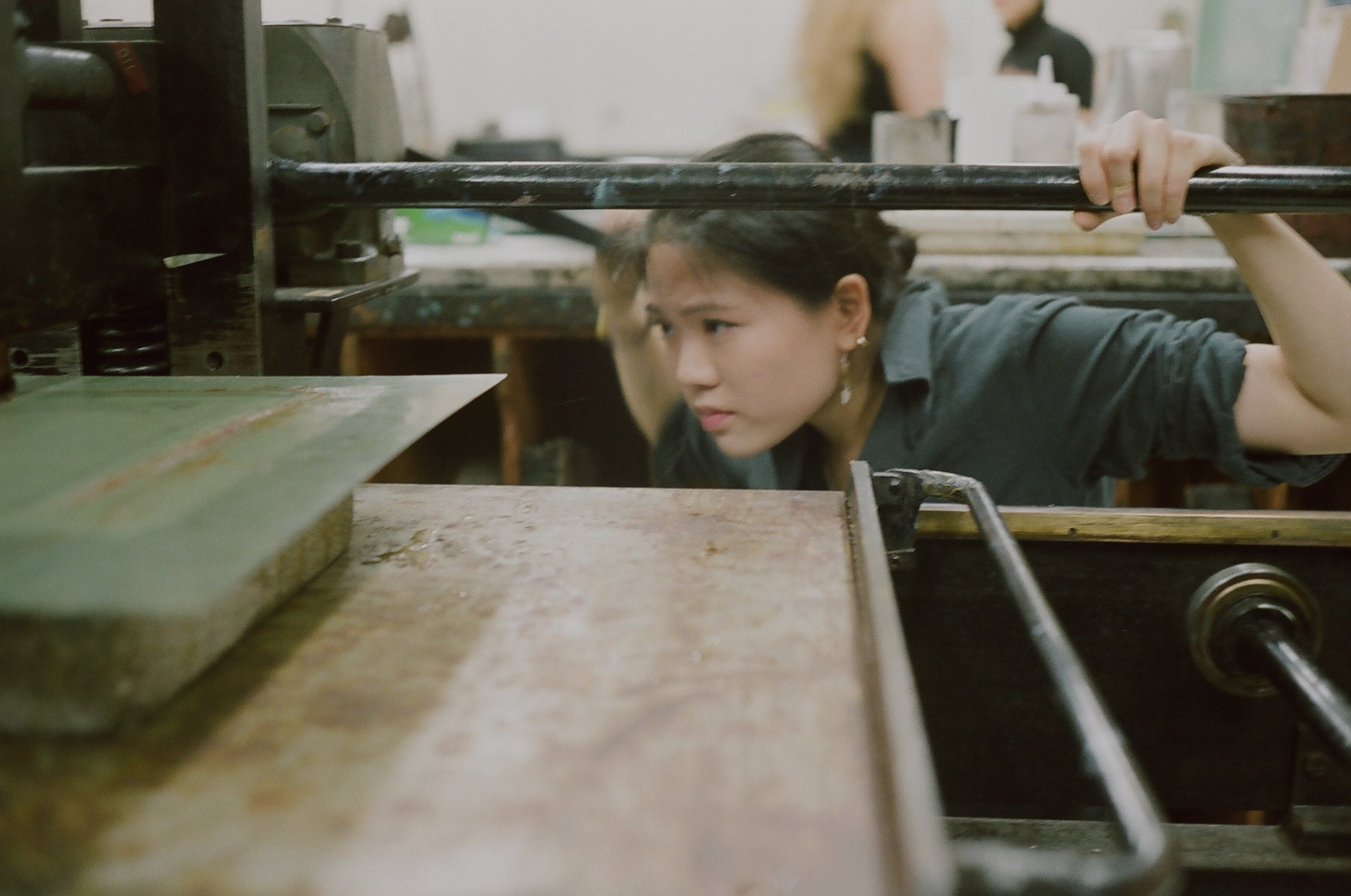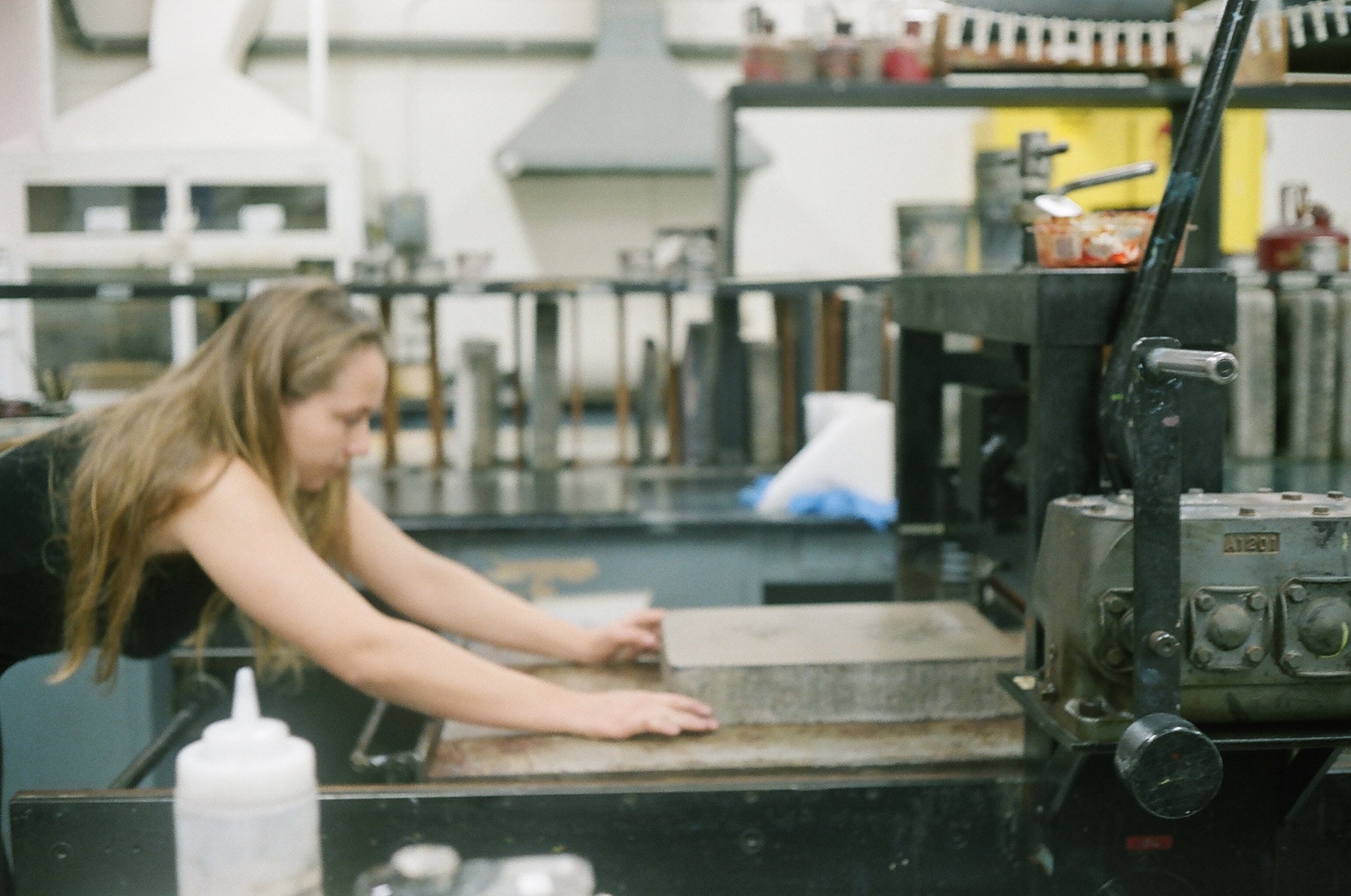Intro: In this post, current OHMA student Nora Waters explores the inherent creative practice of the encounter, whether it be lithography or an interview, after discovering that she has lived much of her life as a maker without a medium.
I cannot remember the particular set of moments where I was led to believe that I could not draw, but I was not invited to docent excursions at the Milwaukee Art Museum in sixth grade and by high school I opted out of all elective art courses. At some point during my childhood, I internalized the idea that my drawings were not good enough. Yeah, I was crafty and at times would even call myself creative, but identifying as an artist never resonated. My jagged pencil lines captured the tremor of my right hand and my skills were far from anything I believed to be considered art.
Moving to New York to attend Columbia University and pursue my Masters in Oral History has opened a portal of uninhibited intuition and creativity. I thought why not! and signed up for lithography, my first art class since grade school. What was initially an addition to my checklist of lofty goals quickly became my safest home in the city. The lithography studio calls for my presence in a way I have never experienced. The creative journey from idea to imagery requires my meticulous attention each and every step of the way. To make a lithograph, I draw on the stone with toushe, I etch the image with rosin, baby powder, and gum arabic, I roll up the ink, I sponge the surface of the stone with water, I ink the stone, I place my paper, I drop the press and after all of my patience and care, an image appears on paper. Proper communication between the ancient stone and ink, as my Professor Mahbobe would say, is a complete sensory experience. Don’t press too hard on the stone. Play with the ink until it sings it’s specific “oiishhh oiishhh.” Wring out the sponge to satisfy the stone’s craving for light misty cover.
Meanwhile, in the recording booth or in the comfort of my grandmother Natalie’s living room in Milwaukee, we construct interviews through another set of varied sensory experiences. The translation of memories and visions into recorded language may include the feeling of a crinkled water stained photo on the fingertips, the aroma of a boiling pot of soup, or the ring of genuine laughter of a re-surfaced childhood memory. The tension in our shoulders as we conjure up language to describe the loss of a family member and comforting eyes that whisper “I am with you” with just a look from across the table are part of this creative journey. Our interviews are a process of trust building and ongoing consent that extends far beyond a release form.
In Fernanda Espinosa’s recent workshop, Words Transmitted; World’s Apart, she offers a powerful example of the ways we can combine mediums to reflect the presence of our encounters. Espinosa’s memory transmission containers are made with slow moving illustrations, audio, and music, to house intergenerational memories that cross time and space. These containers invite us into the worlds of her narrators and allow us to imagine the journey from encounter to product. These interdisciplinary offerings highlight the cultural histories, celebrate the dinner table conversations, and potentiate access for the participants of the project. She said that, “art is such a great way of having more freedom.” Her comment holds deeper meaning than the stereotypical idea that artists are free to do whatever they want. Espinosa illustrates narratives that challenge Western notions of storytelling and access. Through a combination of oral history and visual art, she invents a medium capable of surpassing written text and intentionally maintains them outside of a traditional archive.
For most of my life I related deeply to a reflection on art-making by Lynda Barry.
Comic by Lynda Barry
However, in my growing practice of both printmaking and oral history, I now evaluate my own art and the process of art making far beyond the absolute questions: “is this good” or “does this suck?” Instead, I am interested in aligning the medium with the intention and intimacy of my encounters. I find meaning and beauty in the things I see, hear, feel, touch, and taste, a creative process that has always been a part of me and that I am growing increasingly free to express, enjoy and celebrate.
Nora Waters is a MA candidate in Oral History at Columbia University. She has a background in grassroots organizing, and is particularly interested in the intersections of art, queerness, and anti-racism in her two homes, Milwaukee and New Orleans. Through her lithography and multimedia courses at Columbia, Nora has discovered an insatiable urgency to create.







